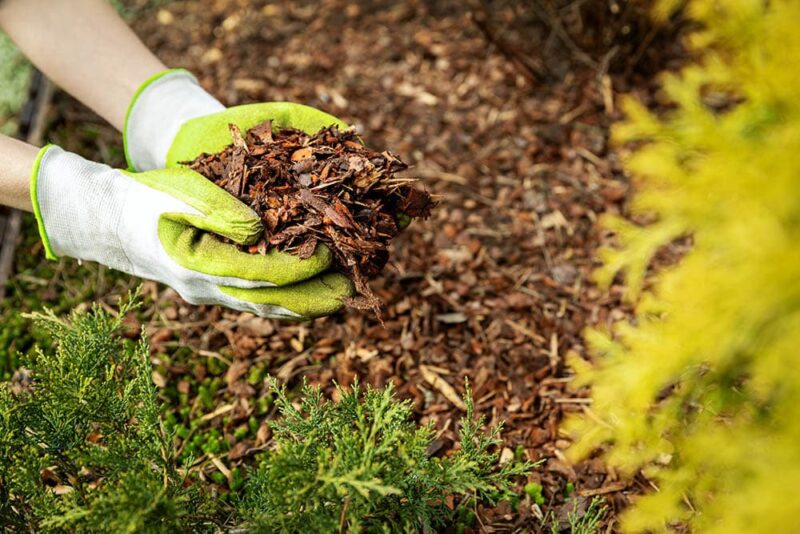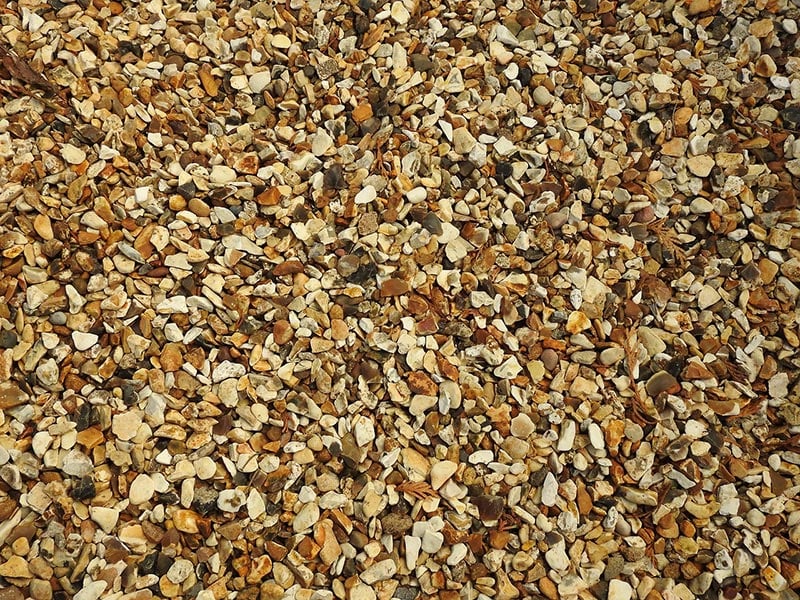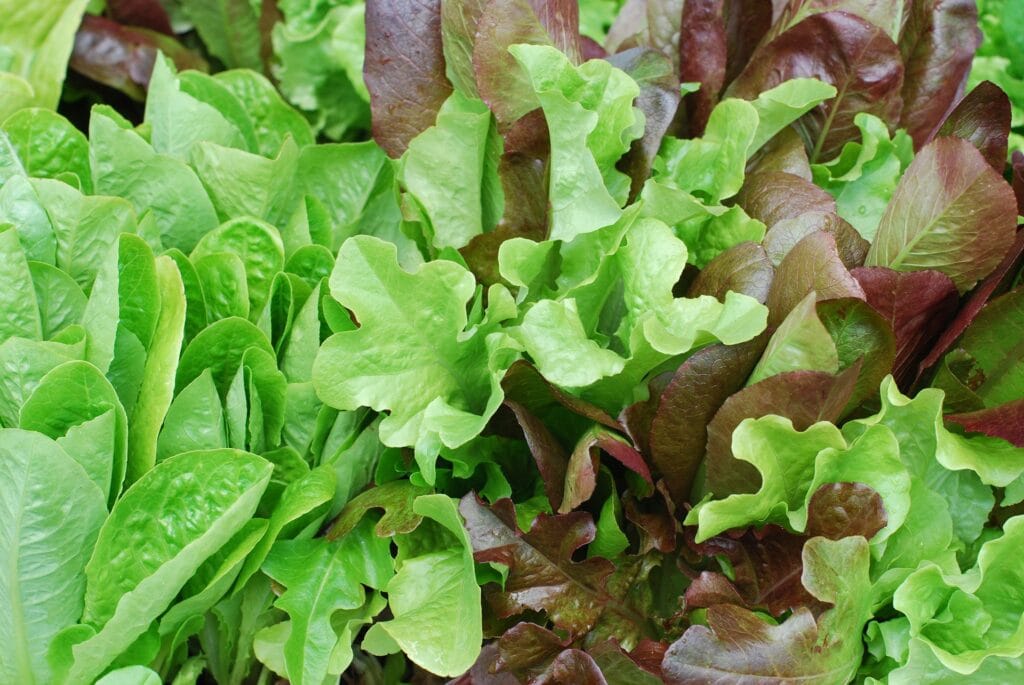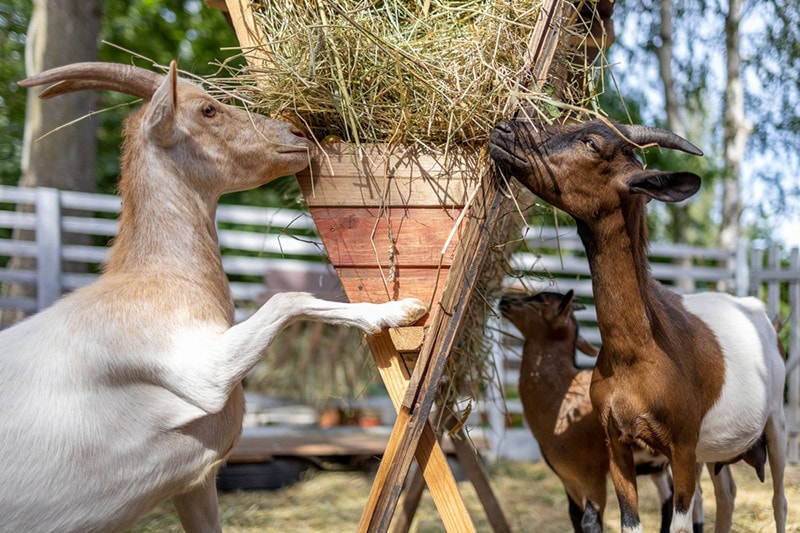10 Best Mulch Alternatives for Your Garden (with Pictures)
-
Lindsey Lawson
- Last updated:

Mulch can be beneficial in your garden for several reasons. Mulch provides weed control, protects your plants from the cold, and can help your soil retain water. The downside to mulch is that it needs to be replaced frequently, sometimes even yearly. This can get pricey. But, there are other alternatives to mulch that are more cost effective and/or last longer than mulch. Let’s look at 10 of the best mulch alternatives for your garden.

The 10 Best Mulch Alternatives for Your Garden
1. Pea Gravel
| Materials: | Landscaping fabric |
| Tools: | Shovel |
Chances are, you have seen pea gravel in someone’s garden in place of mulch. Unlike traditional gravel, pea gravel is smooth, round, small, and more colorful. Pea gravel is commonly used in walkways, line driveways, or surrounding playgrounds and patios. It’s easy to find at most home improvement stores, though it’s heavy to cart around.
Pea gravel is very aesthetically pleasing and will not decompose like mulch. It can be difficult to lay unless you close off the area because the rock tends to roll and bounce around, so be prepared for some clean up afterward.
It’s best to weed your garden well and lay some landscaping fabric down before laying the pea gravel. Make sure to have a shovel or another tool on hand to make room for your garden plants during the process.
- Visually appealing
- Easy to find
- Does not decompose
- Heavy
- Difficult to lay
2. River Rock

| Materials: | Landscaping fabric |
| Tools: | Shovel |
River rock is another type of gravel that is great for gardens. River rocks are rounded, smooth in texture, and larger than pea gravel. It comes in many different hues, making it a gorgeous additive to any landscape. It can be used in place of mulch or even as edging to keep mulch in place.
River rock is also a convenient way to direct drainage. River rocks drain quickly, so they’re great for garden plants like cacti, succulents, and others that do not like moisture.
River rock does retain heat, so it should not be used with delicate plant varieties that could be damaged by the reflected heat. They are, however, ideal for gardens and flower beds that have plants that thrive in the sun and heat.
- Visually appealing
- Great for sun and heat-loving plants
- Can be used to direct drainage
- Does not decompose
- Heavy
- Difficult to lay
- Not ideal for delicate plants that are prone to heat damage
3. Marble Chips
| Materials: | Landscaping fabric (optional) |
| Tools: | Shovel |
Marble chips are a popular mulch alternative that adds a sleek, beautiful look to landscapes and gardens. They are simply marble, crushed into a gravel-like consistency. They are heavy, like other types of gravel or rock and so great in areas with heavy wind.
Marble chips have a pH that will eventually leech into the soil and make it more alkaline, so don’t use marble in gardens with plants that require acidic soil.
Marble can be difficult to lay because of the weight and the fact that it can easily roll around and require clean-up if you close off the area you are laying it in. Landscaping fabric is recommended, as it will make the process easier, but you can lay it directly on the soil.
Marble also reflects heat, and while it can protect the roots of plants it can also heat them quickly. It’s not ideal for plants sensitive to heat and may overwhelm certain plants that are in the full sun.
- Visually pleasing
- It will help protect the roots of plants
- Does not decompose
- Great for areas with high winds
- Will change the pH of soil over time
- Reflects heat
- Heavy
- Difficult to lay
4. Pumice Stone
| Materials: | Gloves, Landscaping fabric (optional) |
| Tools: | Shovel |
Pumice is a beautiful, textured stone that is low-density and lightweight. It can make a great alternative to mulch in most garden settings. The rough surface helps repel insects and unlike most stones, it is less prone to mold and fungus since water and air can pass through easily. It’s a good idea to use gloves when laying pumice because of the rough texture.
You can choose to lay down landscaping fabric but that’s optional. Many gardeners choose to use pumice as a top dressing for the soil to prevent rainwater from puddling around their garden plants. It also helps loosen the soil and keep it from compacting.
It can heat up quickly so it is not ideal for more sensitive plants. Pumice may have a rough surface, but once it is laid, the earthy color of the pumice surely complements the garden.
- Low density and lightweight
- Visually pleasing
- Helps repel certain insects
- Less prone to mold and fungus
- Prevents rainwater from puddling around plants
- Rough texture for laying
- Heats up quickly
5. Old Newspaper
| Materials: | Old newspaper or cardboard |
| Tools: | Shredder |
If you have old newspaper laying around, you can choose to throw it in a paper shredder and use the pieces as a mulch alternative. Lead in the ink used to be a concern but it is no longer used, so this makes for a very cost-friendly and eco-friendly alternative to traditional mulch.
You can also use old cardboard if you do not have newspaper clippings. Newspaper can be added to compost, too. Newspaper and cardboard should not cause any harm to plants, worms, or insects. It is not visually appealing like some of the other choices on this list.
Newspaper decomposes quickly and will only last about 6 weeks. Cardboard is more likely to last a bit longer. Both will be prone to blowing away and making a mess.
- Environmentally friendly
- Great way to repurpose
- Can be added to compost
- Cost-friendly
- Not visually pleasing
- Blows around easily
- Decomposes quickly
6. Leaves

| Materials: | Lawn and leaf bags, gloves |
| Tools: | Leaf mulcher, Lawn mower (optional) |
Using leaves as an alternative to mulch is very common and cost-friendly. It’s as natural as it gets and is great for garden plants since the nutrients from the leaves will be available to them. Leaves blow around easily and are not as appealing to the landscape as mulch or some of the other alternatives.
There is some concern that any infected leaves could transmit to the garden plants, so it’s a good idea to sift through the leaves to ensure there are no signs of infection before they are shredded. You will need a leaf mulcher for this, as whole leaves are not ideal.
If you do not have a leaf mulcher, you could shred them with a lawn mower that has a bag attachment. This is environmentally friendly, cheap, and easy. You will likely have more leaves than you need, depending on how many trees are in your yard, so you may have to make some storage space for the leftovers.
- Cost-friendly
- Provides nutrients to plants
- Environmentally friendly
- Natural and simple to lay
- Unappealing
- Blows around easily
- May infect plants
- Requires a leaf mulcher or lawn mower
7. Grass Clippings
| Materials: | Gloves, lawn and leaf bags |
| Tools: | Lawnmower, bow rake |
Another natural option that will provide your plants with some extra nutrients is putting down grass clipping rather than mulch. Of course, it saves you a lot of money and is completely eco-friendly. This will be more time-consuming since fresh-cut grass cannot just be placed in the garden. This would risk mold growth and the transmission of seeds into the garden.
You first need to dry out or compost the grass clippings, so they are not able to damage your plants. Both the drying and composting processes take time, so you’ll need to be patient. The grass is rich in nitrogen, so it will promote the growth of your garden plants if done right.
- Cost-friendly
- Can be mixed with compost
- Helps promote plant growth
- Natural and eco-friendly
- Requires lawn mower
- Must be dried first
- May result in unwanted growth
8. Hay or Straw

| Materials: | Gloves |
| Tools: | Bow rake |
Hay or straw is another more natural but not so visually pleasing option for gardens and landscapes. You have a little more room for creativity though because you can go for a more rustic country feel if you landscape it right.
This is great for those that live out in the country or on farms. It may attract some furry critters and even some insects or snakes. Hay and straw will help keep weeds at bay, release nutrients into the soil, and will retain moisture. Out of all the natural options, this will be the priciest, though it’s not expensive at all.
It is best used in larger gardens and will need to be applied in thick layers for optimal results. If you don’t have your own straw or hay, it is easy to find online or at a store. You will have to replace it regularly since it decomposes relatively quickly.
- Inexpensive
- Easy to lay
- Provides nutrients to plants
- Eco-friendly
- Decomposes easily
- May attract insects and snakes
- Not as appealing
9. Compost
| Materials: | Compost bin, gloves |
| Tools: | Bow rake |
Compost in place of mulch will provide similar benefits as much but will also enrich the soil with nutrients. Unlike other options, the rain will easily penetrate through compost, but this will consistently improve the soul. Compost is another cheap and environmentally friendly choice.
You simply spread your compost in a thick layer, covering the soil throughout the garden. Unlike mulch that will suppress weeds, compost will nourish them and provide them a space to flourish, so you will need to weed extensible before placing your compost down.
- Environmentally friendly
- Cost-effective
- Promotes plant growth and nourishes the soil
- Great way to use organic waste
- Compost will nourish weeds
10. Rubber Mulch

| Materials: | Gloves, landscape fabric |
| Tools: | Shovel |
Rubber mulch is the most controversial mulch alternative. It is typically made up of recycled tires that have been ground into small pieces. There are concerns of toxicity due to the chemicals in the rubber and flammability, which turns many people away from using rubber mulch. It should not be used in areas that are prone to wildfires and there is worry it could harm the soil.
It will last a long time, though it will cost more than some other options on the list. It keeps the soil hydrated, and well insulated, and may help slow fungal growth. It may not be the most ideal choice for most people but it is still a common alternative.
It’s hard to keep weeds down and they will need to be removed by hand. Rubber mulch is prone to fading. Rubber mulch will not run off during rain or irrigation and may help slow the fungal growth within the garden.
- Keeps soil moist
- Does not run off
- Slows fungal disease
- More costly
- Flammable
- Potentially toxic
- Prone to fading
Conclusion
As you can see from our list, there are plenty of mulch alternatives that you can use if you don’t want to deal with the upkeep of mulch. These alternatives can be cheaper or more expensive than traditional mulch, but even the more expensive ones can be cost effective in the long run. Hopefully, you’ll find something that will work for your garden.
See also:
- 10 Clever Uses for Hay at Home (with Pictures)
- What Are the Best Mulches for Grass Seed? 6 Great Options
Featured Image Credit: ronstik, Shutterstock
Contents
